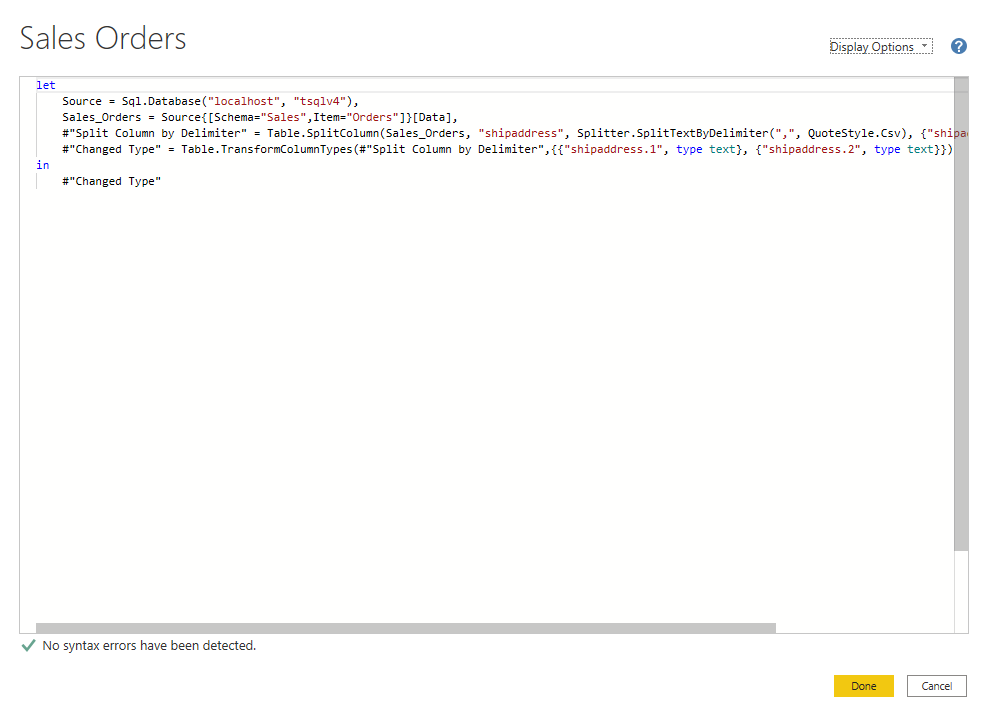Use Advanced Editor to modify M code
Each time you shape data in Power Query, you create a step in the Power Query process. Those steps can be reordered, deleted, and modified where it makes sense. Each cleaning step that you made was likely created by using the graphical interface, but Power Query uses the M language behind the scenes. The combined steps are available to read by using the Power Query Advanced Editor. The M language is always available to be read and modified directly. It is not required that you use M code to take advantage of Power Query. You will rarely need to write M code, but it can still prove useful. Because each step in Power Query is written in M code, even if the UI created it for you, you can use those steps to learn M code and customize it to suit your needs.
After creating steps to clean data, select the View ribbon of Power Query and then select Advanced Editor.
The following screen should appear.
Each Power Query step will roughly align with one or two lines of M code. You don't have to be an expert in M code to be able to read it. You can even experiment with changing it. For instance, if you need to change the name of a database, you could do it right in the code and then select Done.
You might notice that M code is written top-down. Later steps in the process can refer to previous steps by the variable name to the left of the equal sign. Be careful about reordering these steps because it could ruin the statement dependencies. Write to a query formula step by using the in statement. Generally, the last query step is used as the in final data set result.

